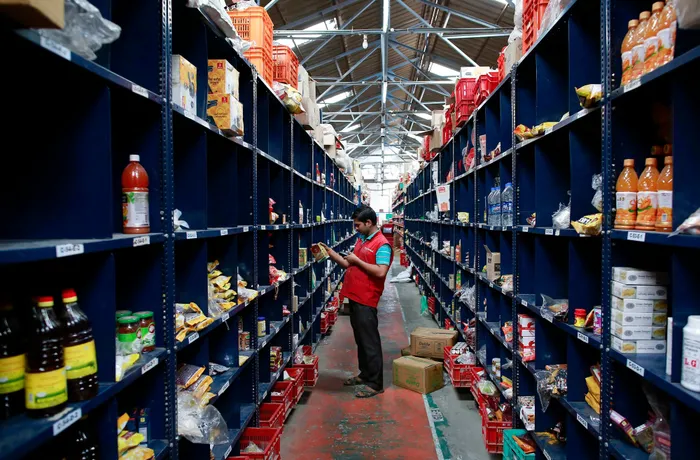Ruan Jooste’s Rants and Cents: South Africans are living on borrowed time

Food prices adding fuel to the fire Photo: REUTERS/Danish Siddiqui
The last few years have been extremely challenging for South Africans and their bank balances. It started with Covid-19, and the subsequent extended lockdowns, which left every major component of our society in disarray.
From a significant contraction of economic activity, to a surge in government and debt and a sharp spike in unemployment.
But the abuse is far from over.
The South African Reserve Bank has increased interest rates to a 13-year high as the increasing cost of dealing with severe power outages further de-anchor inflation expectations and cripple business confidence.
As we’ve all learnt, and continue to do so, during periods of social and economic hardship, the importance of households, businesses and government all having access to financial resources to help cope with a wide range of unexpected and urgent challenges, is imperative. From a full functioning Unemployed Insurance Fund during a spree of small business closures and job losses to SA's special risk state-owned insurer, Sasria, providing sufficient cover for damage to property caused during riots and protests in the event the electricity grid collapses.
Some times are so tough, we have to dip into our savings and or even default on our debt obligations to keep our heads above water.
But South Africa's savings rate is so bad and far below its emerging market peers, that it is actually considered one of the lowest in the world at only 0.5%. This was revealed by Deloitte's South African Investment Management Outlook 2023 released earlier this year.
The national savings rate measures the income households, businesses, and governments save. It is the GDP that is saved rather than spent in an economy.
The rate is calculated as the difference between a country’s income and consumption divided by that income. It is also an indicator of a economic health as it shows trends in capital formation.
Deloitte said global challenges, such as inflation and high-interest rates, are amplified in South Africa by its low savings rate. So there is little room for households to manoeuvre to break this cycle.
But despite the big squeeze on households' real incomes across the economy last year, consumer spending proved rather resilient. According to the SA Reserve Bank, the average quarter-on-quarter growth rate of consumer spending growth in these economies last year was 0.4%, slightly better than the average rate recorded in the 2010s. The increase in household consumption expenditure in the fourth quarter of 2022 was consistent with the increases in real disposable income and credit extension, and resulted largely from faster growth in real spending on durable goods and services, the Bank said.
“Purchases of furniture and household appliances, recreational and entertainment goods as well as computers and related equipment increased, while growth in consumer spending on personal transport equipment slowed. Real spending by households on semi-durable goods remained broadly unchanged for a second successive quarter while purchases of non-durable goods decreased slightly further in the fourth quarter of 2022, largely due to lower spending on food, beverages and tobacco as well as medical and pharmaceutical products.”
The increase in household consumption expenditure in the fourth quarter of 2022 was consistent with the increases in real disposable income and credit extension, and resulted largely from faster growth in real spending on durable goods and services, the Bank said.
With belts being tightened at every nook and corner, as food and fuel inflation run away with us, and hardly and savings to fall back on, the average South African consumer is hardly in the position to invest in risk cover or buy a retirement annuity. According to the findings of Asisa’s Life and Disability Insurance Gap Study in 2022, only 14.3 million local income earners had sufficient life and disability insurance to cover only 45% of their needs.
According to the Reserve Bank numbers, the growth in the deposit holdings of the household sector fluctuated lower during the first half of 2022 and remained fairly stable thereafter, likely reflecting the impact of elevated food and fuel prices as well as the higher debt repayment burden amid the rising interest rates.
Growth in total loans and advances extended by monetary institutions to the domestic private sector accelerated to double digits in September 2022 before moderating slightly to 9.7% in January 2023. Following a few years of tepid growth in credit extension, annual average growth accelerated to 7.8% in 2022 – the highest since 2015..
In short, South Africans cannot currently maintain their lifestyle without taking on debt. And that is a bubble that can burst at any time, and that should scare the fear back in us all.
PERSONAL FINANCE